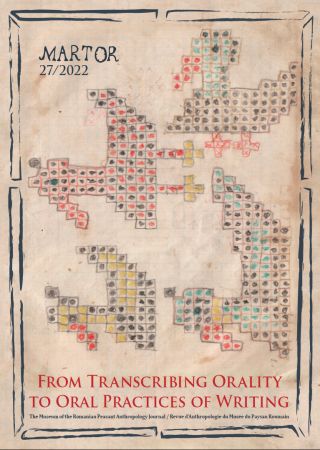When People Write as They Speak: An Analysis of Letters Left on the Miraculous Graves of Bellu Catholic Cemetery
When People Write as They Speak: An Analysis of Letters Left on the Miraculous Graves of Bellu Catholic Cemetery
Author(s): Florența Popescu-SimionSubject(s): Customs / Folklore, Ethnohistory, Cultural Anthropology / Ethnology
Published by: Muzeul Ţăranului Român, Editura Martor
Keywords: Urban ritual; prayer letters; popular akathists; vernacular religion; orality;
Summary/Abstract: Starting with the second half of the twentieth century, a number of graves from Bellu Catholic Cemetery in Bucharest became the stage of a ritual. The allegedly miraculous graves achieved fame due to different and, in some cases, random characteristics. Many people (most of them Greek-Orthodox, not Catholics) come to perform this ritual to have their wishes fulfilled. As an important part of the ritual built around these graves, its performers are leaving written notes on them, containing their wishes. The notes are often handwritten on different pieces of paper (notebook pages or even receipts), although they may also be typed on a computer and printed. In rare cases, the performers leave notes written on the back of printed photos. My research consisted in observing the ritual, talking with a small number of people who performed it, and, most importantly, analyzing the notes left by the graves. All the performers I interviewed were women, and most of them (with one exception) strongly disapproved of the practice of leaving notes. Nevertheless, judging by the great number of pieces of paper I found by the “miraculous” graves every time I went to Bellu Catholic Cemetery, this practice seems to be general and deemed to be effective. The paper I propose is, therefore, focusing on the analysis of those notes. The way they are handwritten or typewritten, as well as how their content offers valuable insight into the performers’ social identity, religious affiliation, and level of education, as they contain specific formulae, spelling errors, and professional or personal wishes. The “secondary orality” (Zumthor 1972) involved in these texts is an important element of the “vernacular religion” horizon (Primiano 1995) to which the performers of the ritual obviously belong.
Journal: Martor. Revue d’Anthropologie du Musée du Paysan Roumain
- Issue Year: 2022
- Issue No: 27
- Page Range: 81-92
- Page Count: 12
- Language: English

